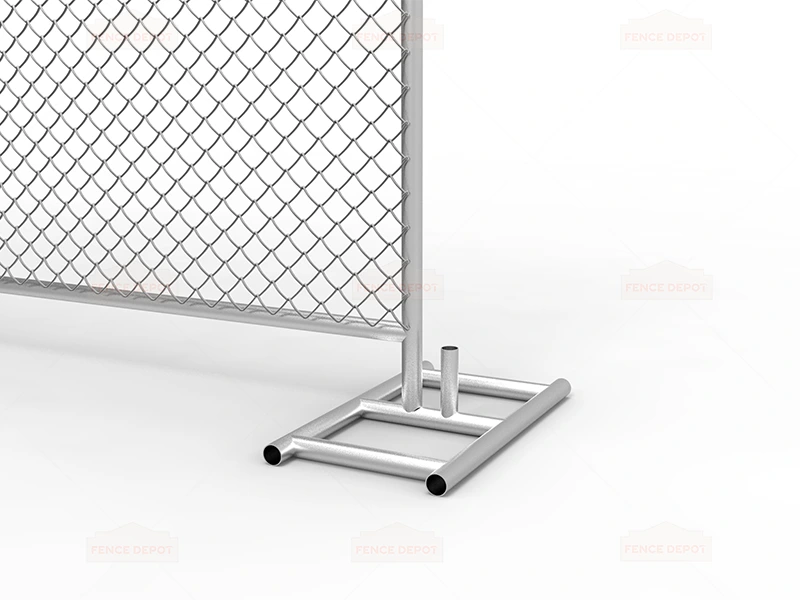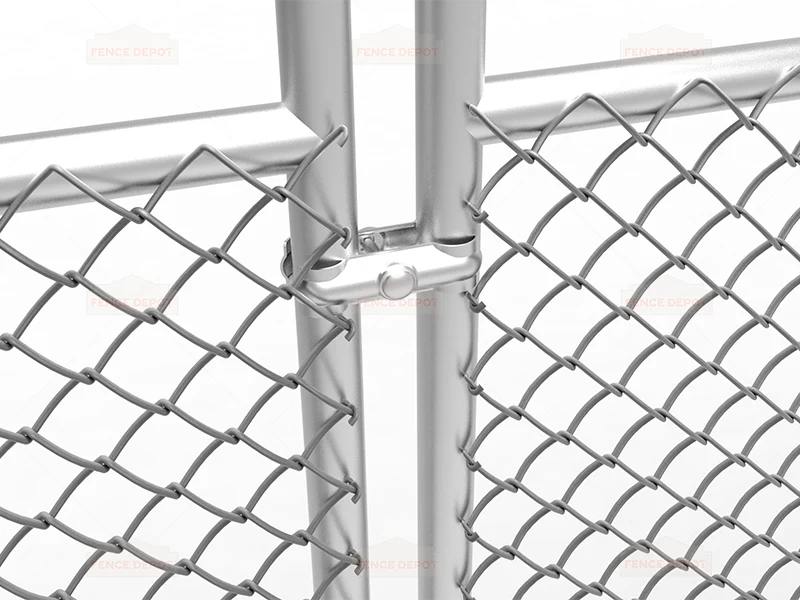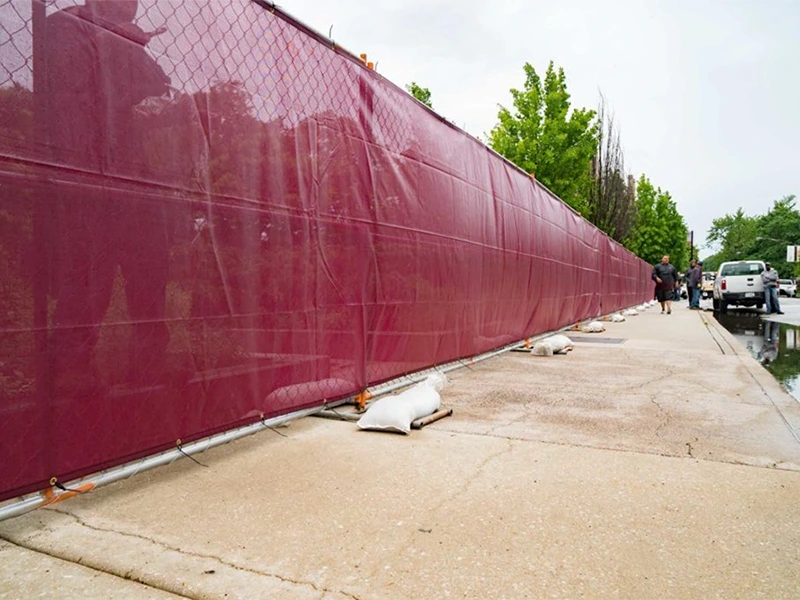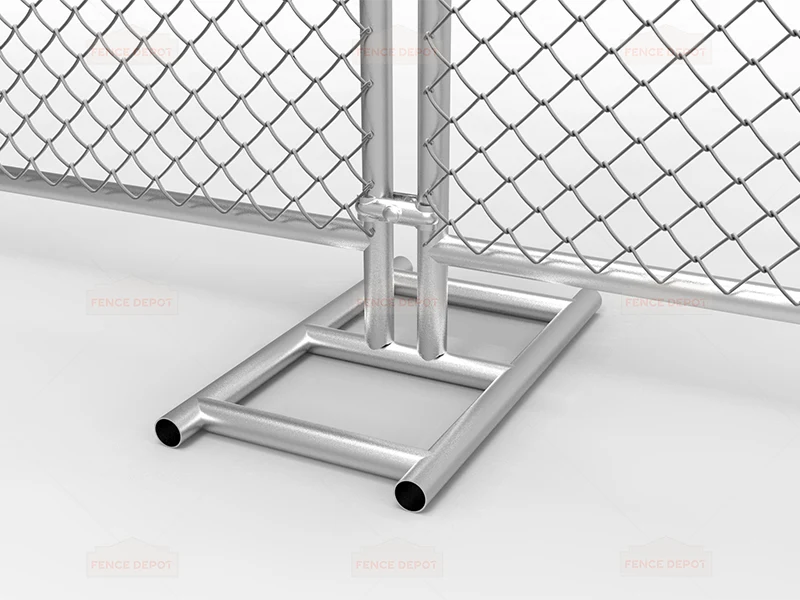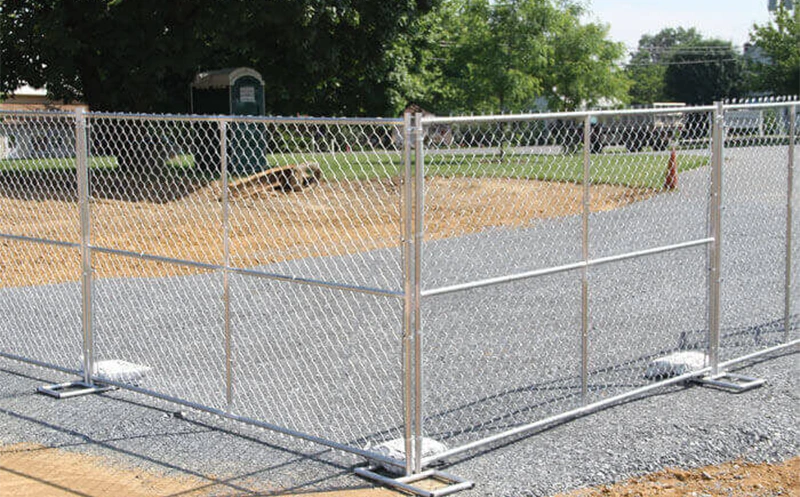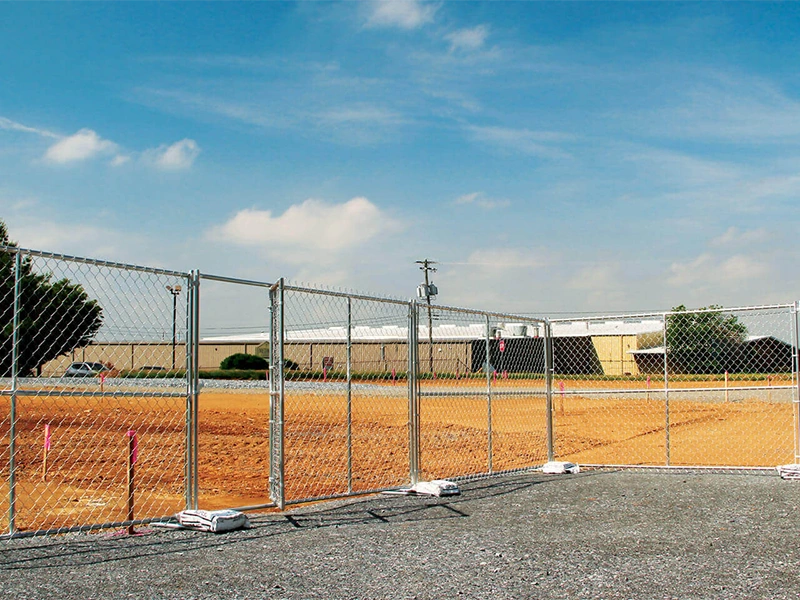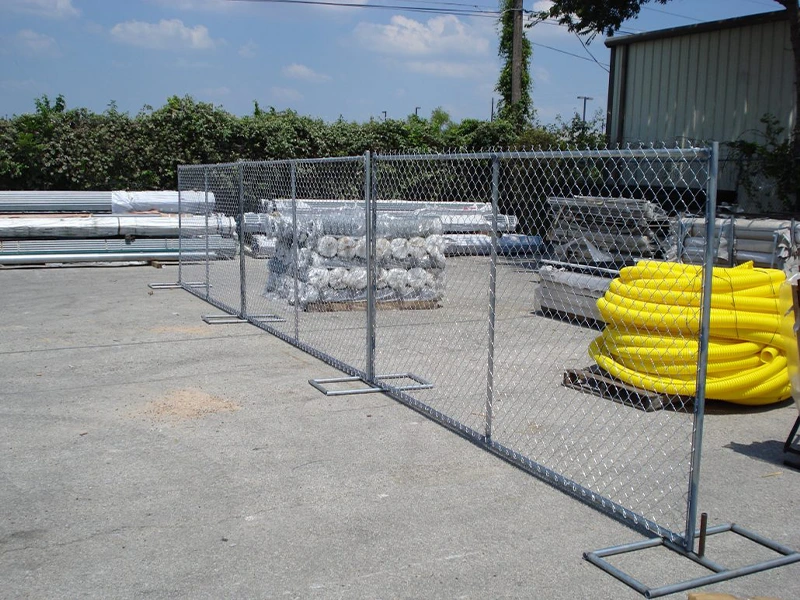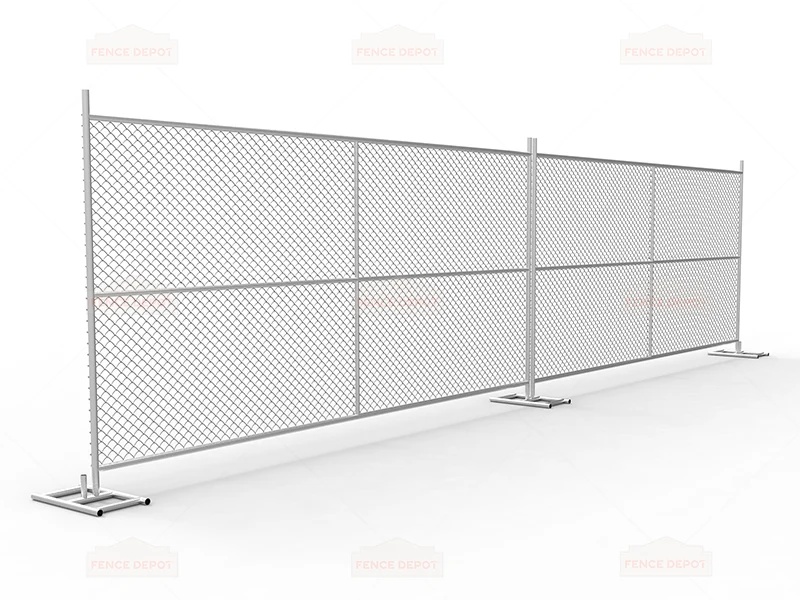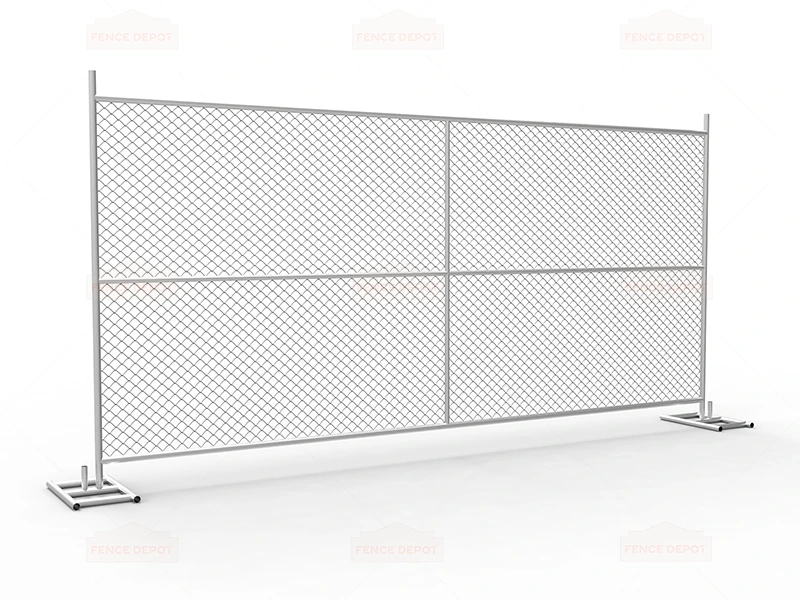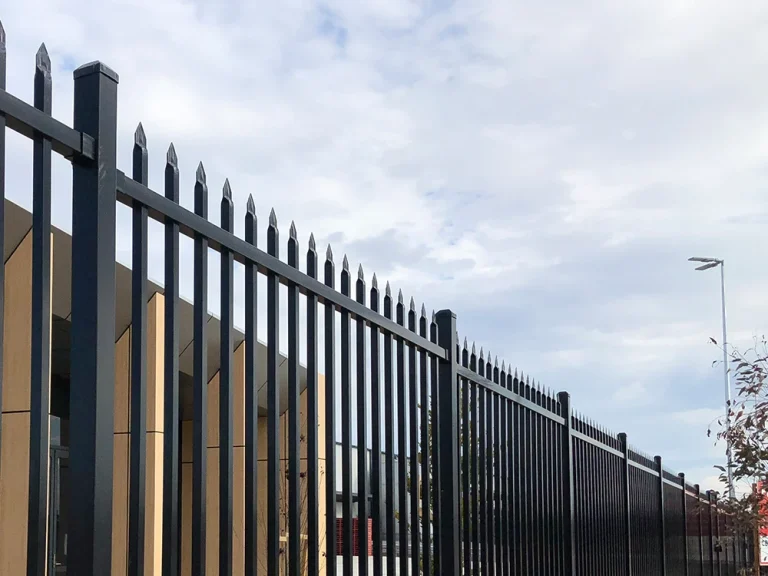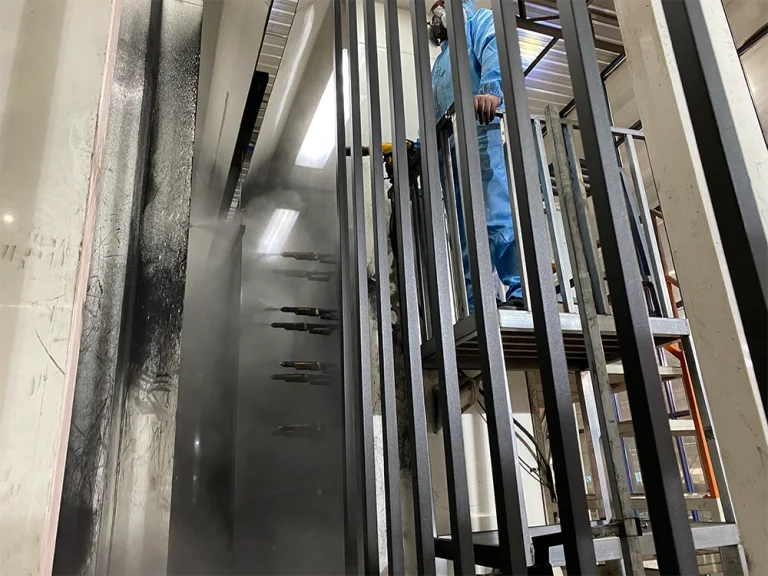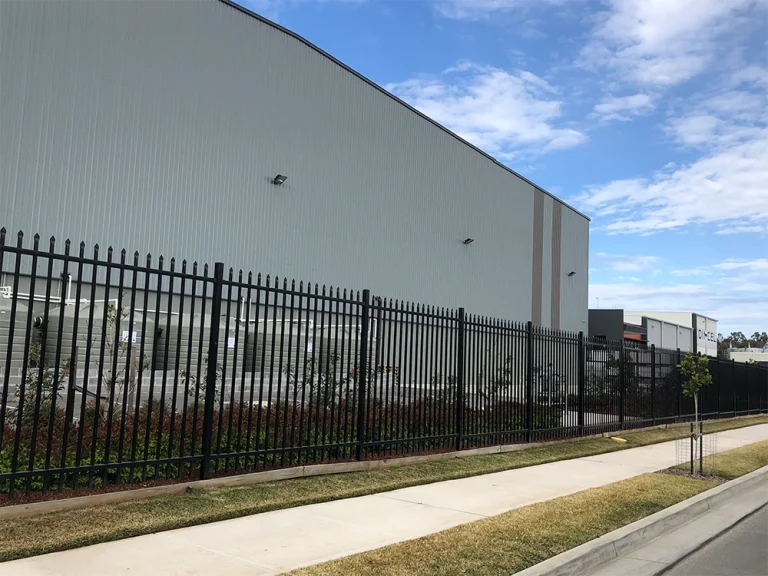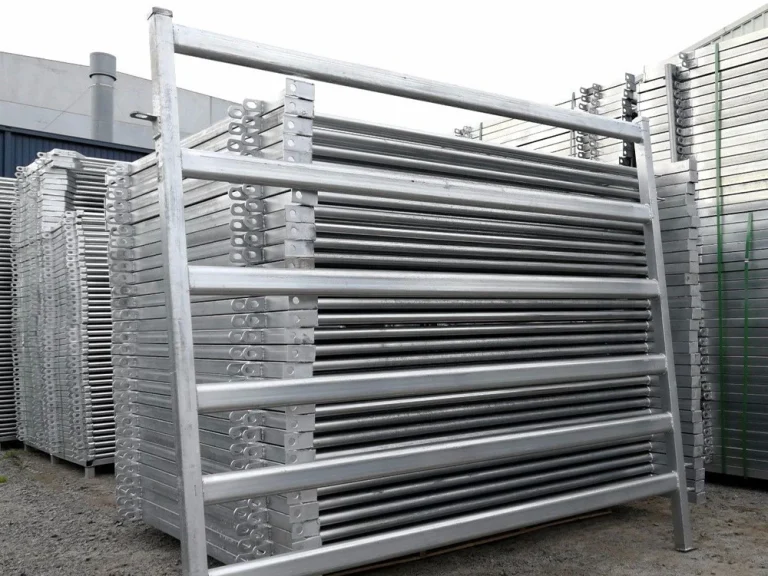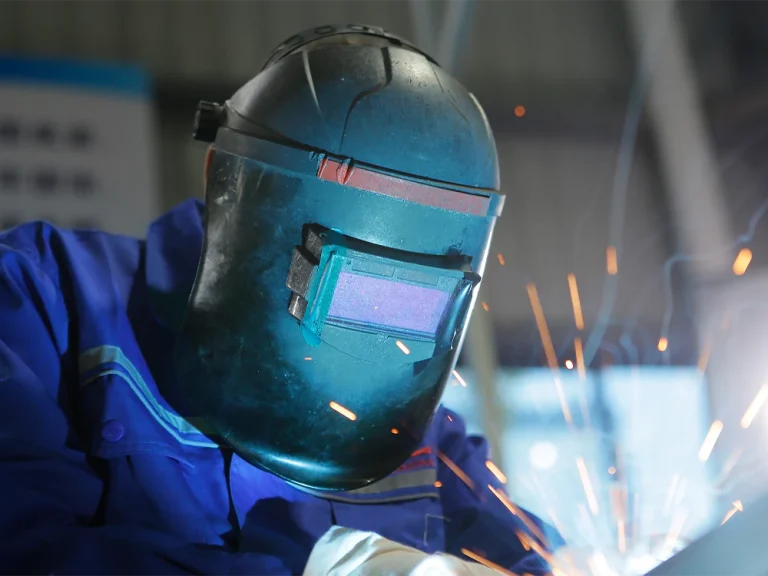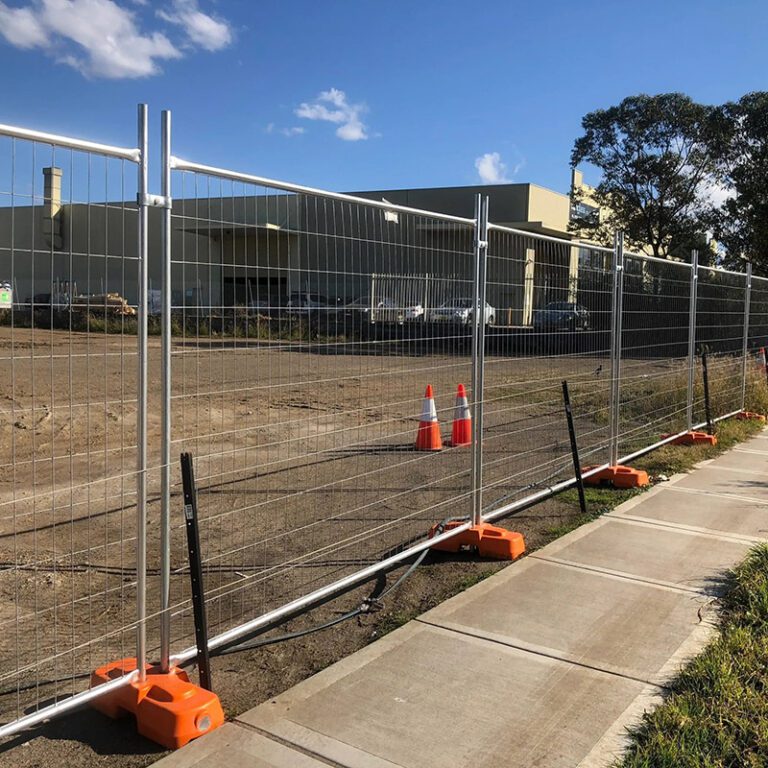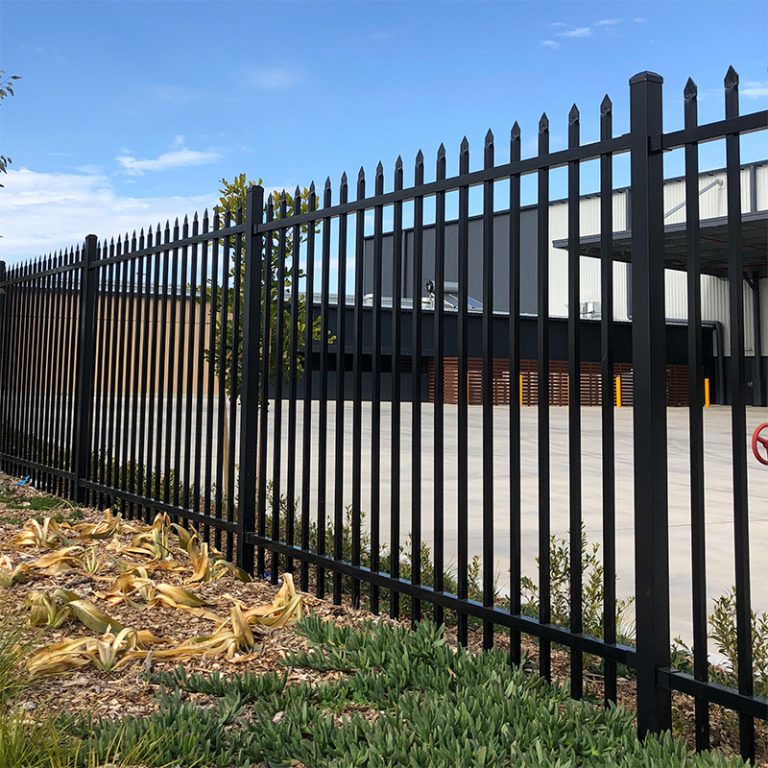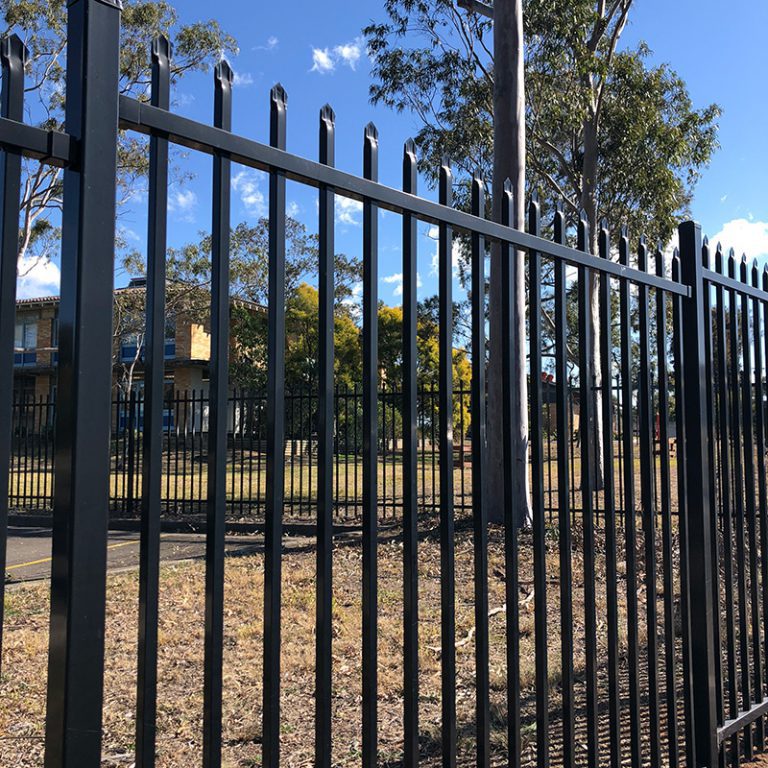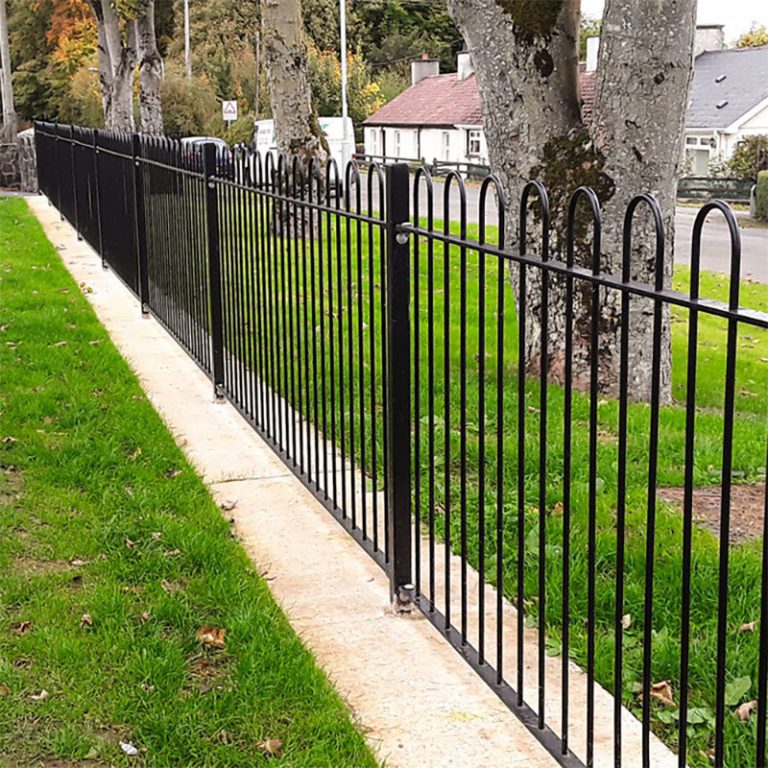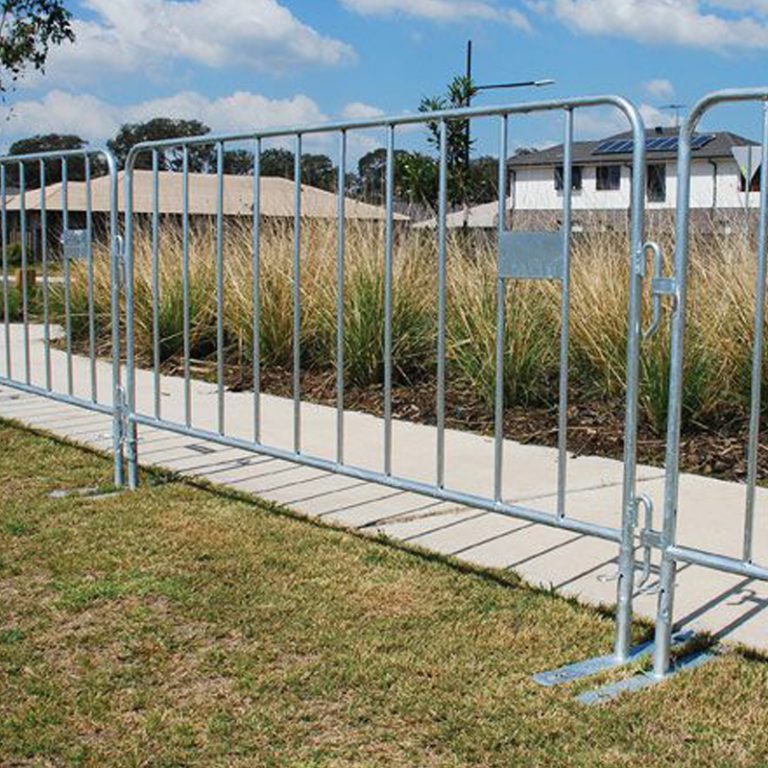Setting up a temporary chain link fence is a practical solution for various short-term enclosure needs, such as construction sites, outdoor events, and public gatherings. This comprehensive guide delves into the essentials of making and installing temporary chain link fences, ensuring that your setup is secure, compliant, and effective. From selecting the right materials to understanding local regulations, we provide all the necessary details to help you make an informed decision.
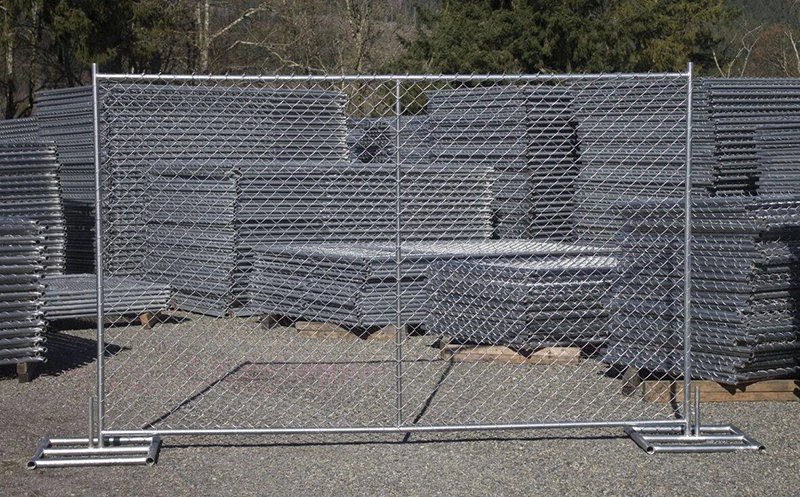
Step-by-Step Installation Guide for Temporary Chain Link Fence Panels
1. Gather Your Materials
First, ensure you have all necessary materials on hand: chain link fence panels, base stands, panel clamps, and optional tarpaulin for added privacy or protection. Choosing materials from a reputable fence supplier guarantees durability and quality.
2. Prepare the Installation Area
Clear the site where the fence will be installed. Remove any debris and level the ground if necessary. This preparation ensures the stability of the fence once erected.
3. Position the Base Stands
Lay out the base stands along the line where the fence will be installed. These stands provide a stable foundation for the fence panels and should be spaced according to the width of the panels you are using.
4. Install the First Panel
Place the first chain link fence panel into the base stand. Ensure it is upright and stable before moving on to the next step.
5. Secure Panels Together
Align the next panel close to the first, and use panel clamps to connect the two panels at the top, middle, and bottom. This connection is crucial for maintaining the strength and integrity of the fence.
6. Continue Adding Panels
Repeat the process for each panel, ensuring each is securely clamped to the previous one. Check alignment and stability as you go to ensure the fence forms a continuous barrier.
7. Optional: Attach a Tarpaulin
If additional privacy or protection is required, attach a tarpaulin over the chain link panels using ties or additional clamps. This step is optional but can be useful in various scenarios, such as providing shade or blocking wind.
8. Final Adjustments and Inspection
Once all panels are installed, perform a final inspection to ensure everything is securely connected and properly aligned. Make any necessary adjustments to panel positions or clamps to enhance stability and security.
Additional Considerations for Temporary Chain Link Fence Panel Installation
1. Assessing Site Conditions
Before installation, it’s crucial to assess the specific conditions of the site. Consider factors such as soil type, wind exposure, and terrain slope. This assessment will help determine the best type of base stands and any additional support mechanisms needed to ensure the stability and integrity of the fence.
2. Enhancing Security Features
For enhanced security, consider integrating additional features such as barbed wire or anti-climb spikes at the top of the panels. These features deter unauthorized access and are particularly useful for high-security areas like construction sites or private events.
3. Customization Options
Our temporary chain link fence panels come in various sizes and can be customized to fit specific site requirements. Customization can include varying heights, widths, and even the gauge of the mesh. Discussing your specific needs with our experts can lead to a more tailored and effective fencing solution.
4. Regulatory Compliance
Ensure that your temporary fencing complies with local regulations and safety standards. This includes height restrictions, visibility requirements, and environmental impact considerations. Compliance not only ensures legal safety but also enhances the operational efficiency of your site.
5. Long-Term Use and Reusability
While designed for temporary setups, our chain link fence panels are durable enough for repeated use. Proper maintenance and storage will extend their lifespan, offering an economical solution for users who require temporary fencing on a recurring basis.
6. Installation Training and Support
We offer comprehensive training and support for the installation of our temporary chain link fence panels. This service ensures that your team can install and dismantle the fencing efficiently, safely, and in compliance with best practices.
7. Environmental Considerations
For environmentally sensitive areas, consider using additional protective measures such as sediment control socks or erosion mats. This prevents soil erosion and protects local waterways from contamination during construction or heavy use.
8. Weather Adaptability
Consider the local weather conditions when installing temporary chain link fence panels. In areas prone to high winds, securing the panels with heavy-duty base stands or anchoring them with sandbags can prevent tipping or shifting. For snowy or rainy regions, ensure that the materials used are rust-resistant and capable of withstanding moisture without degradation.
9. Accessibility Features
For sites that require public access, such as events or temporary public exhibitions, incorporate gates within the fence line. These gates should be easy to operate and capable of being securely locked when needed. Make sure to consider the location of gates and traffic flow during the planning phase to facilitate smooth entry and exit.
10. Visual Enhancements
While functionality is key, aesthetics can also be considered, especially for public or commercial events. Custom covers or screens can be attached to the fence panels to enhance visual appeal or to serve as branding spaces for event sponsors or corporate logos.
11. Safety Protocols
Implementing safety protocols during the installation and dismantling of fence panels is crucial. Ensure that all personnel are equipped with the proper safety gear and are trained in safe handling practices to prevent injuries.
12. Coordination with Local Authorities
For installations that impact public areas or high-traffic locations, coordination with local authorities is critical. Be sure to obtain all necessary permits and ensure the installation complies with local guidelines and traffic management plans.
FAQ on Temporary Chain Link Fence Panel Installation
Q1: How quickly can make temporary chain link fence panels?
A1: The installation time can vary based on the length of the fence and the terrain. However, with proper preparation and adequate manpower, a basic fence line can typically be set up within a few hours.
Q2: Are temporary chain link fence panels secure enough for high-security areas?
A2: Yes, when properly installed with robust base stands and secured with panel clamps, temporary chain link fences offer substantial security. Enhancements like barbed wire can be added for additional security.
Q3: Can the fence panels withstand severe weather conditions?
A3: Our fence panels are durable and weather-resistant. For extreme conditions, we recommend using sandbags or ground anchors, bases, etc.
Q4: What should be done with the fence panels after the temporary need is over?
A4: Fence panels should be dismantled, cleaned, and stored in a dry area to prevent damage. Proper maintenance will ensure their longevity and reusability for future needs.
Q5: How can I ensure compliance with local regulations when installing temporary fencing?
A5: Consult local building codes and regulations before installation. In many cases, a permit may be required, especially if the fencing will be in place for an extended period or will affect public access.
Why Choose Us as Your Fence Supplier?
As a professional fence manufacturer, we pride ourselves on providing high-quality materials that make the installation of temporary chain link fences both straightforward and robust. Our products are designed with durability and ease of use in mind, so ensuring that you can set up a reliable fence quickly and efficiently. Additionally, our expert team is always on hand to offer advice and support, helping you to choose the best materials for your specific requirements.
Conclusion
Making and installing a temporary chain link fence can be straightforward if you follow the right procedures and use quality materials. This guide has outlined the critical steps and considerations to ensure that your temporary fencing meets all necessary requirements and effectively serves its purpose. By adhering to these guidelines, you can achieve a secure, compliant, and visually pleasing temporary enclosure that meets your specific needs.

